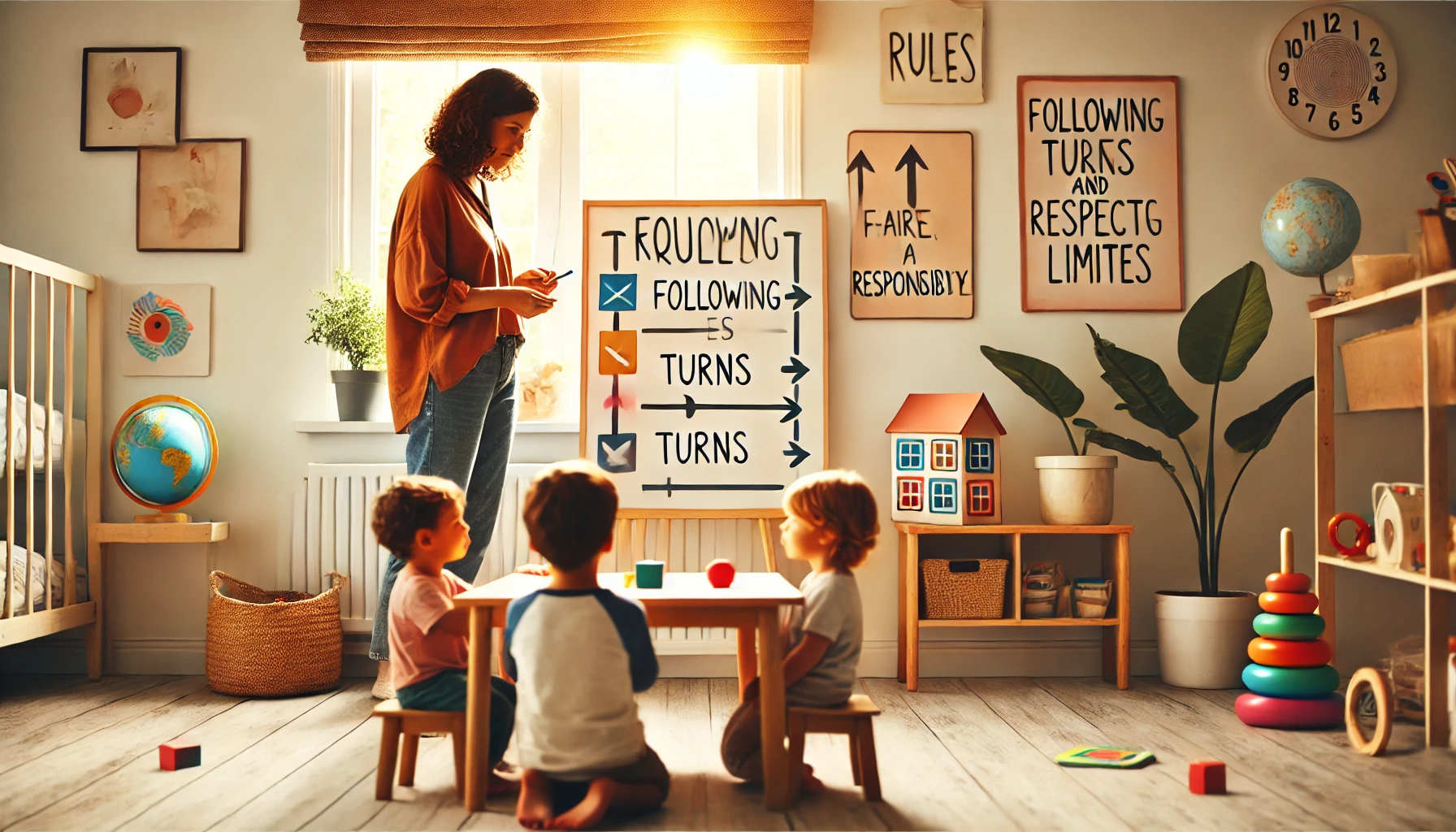How to Teach Young Children About Respecting Rules and Limits
Teaching young children to respect rules and limits helps them develop self-discipline, responsibility, and an understanding of boundaries. When kids learn why rules exist and how to follow them, they gain skills that help them succeed at home, in school, and in social settings. Parents can encourage rule-following through clear expectations, engaging activities, and positive reinforcement. In this article, we’ll explore practical ways to help children understand and respect rules.
Why Teaching Rules and Limits is Important
- Encourages safety – Helps children understand how rules protect them.
- Builds self-discipline – Teaches kids to control impulses and make thoughtful choices.
- Promotes social harmony – Helps children cooperate with others in group settings.
- Develops responsibility – Encourages kids to take ownership of their actions.
- Prepares for structured environments – Helps kids succeed in school and organized activities.
1. Explain Why Rules Exist
Helping children understand the purpose of rules makes them more likely to follow them.
Activity Idea:
- Use simple language: “Rules keep us safe and help everyone get along.”
- Give relatable examples: “We stop at red lights so no one gets hurt.”
- Ask, “What would happen if there were no rules at the playground?”
What Kids Learn:
- That rules are meant to help, not just control.
- How rules create fairness and order.
- The importance of following rules for safety and respect.
2. Set Clear and Consistent Rules
Children need clear guidelines to understand what is expected of them.
Activity Idea:
- Create a Rules Chart with simple phrases like “Use kind words” and “Walk inside the house.”
- Use visual reminders, like pictures or stickers, for non-readers.
- Be consistent—enforce rules the same way each time.
What Kids Learn:
- That rules apply at all times, not just sometimes.
- How structure helps make things more predictable.
- The importance of respecting guidelines at home and in public.
3. Use Fun Games to Teach Rule-Following
Playing rule-based games helps children understand the value of following directions.
Activity Idea:
- Play “Simon Says” to practice listening and following instructions.
- Try a Red Light, Green Light game to teach impulse control.
- Have kids create their own “house rules” for a pretend play activity.
What Kids Learn:
- That following rules can be fun and rewarding.
- How to listen carefully and follow directions.
- The benefits of structure and fairness in group play.
4. Teach Consequences of Not Following Rules
Helping children understand the results of breaking rules encourages accountability.
Activity Idea:
- Use natural consequences: “If we don’t put toys away, we can’t find them later.”
- Role-play scenarios: “What happens if we don’t share at school?”
- Encourage kids to reflect on their actions: “How do you think your friend felt when you didn’t wait your turn?”
What Kids Learn:
- That rules have a purpose, not just restrictions.
- How their choices affect themselves and others.
- The importance of making responsible decisions.
5. Read Books About Following Rules
Stories help children relate to characters who learn about rules and boundaries.
Activity Idea:
- Read No, David! by David Shannon (about understanding and respecting limits).
- Discuss what the character did wrong and how they could have made better choices.
- Ask, “What rules do we have at home, and why?”
What Kids Learn:
- That rules exist in different settings (home, school, public places).
- How following rules helps avoid unnecessary trouble.
- The importance of thinking before acting.
6. Encourage Positive Rule-Following Behavior
Recognizing when children follow rules encourages them to continue good habits.
Activity Idea:
- Praise specific behavior: “I love how you put your shoes away without being asked!”
- Use a Reward Chart, where kids earn stars for following rules consistently.
- Ask, “How did it feel to make a good choice?” to reinforce self-awareness.
What Kids Learn:
- That good behavior is appreciated and recognized.
- How positive actions create a structured and fair environment.
- The motivation to keep practicing rule-following.
7. Teach That Rules Apply Everywhere
Helping kids understand that rules are important in all settings builds consistency.
Activity Idea:
- Discuss different rules for home, school, and public places.
- Play a sorting game where kids decide which rule applies to which setting.
- Explain why some rules are universal (like being kind) while others are location-specific.
What Kids Learn:
- That rules aren’t just for one place but for many situations.
- How to adapt to different environments while still following guidelines.
- The importance of respecting community and social rules.
8. Be a Role Model for Respecting Rules
Children learn by watching how adults follow and respect rules.
Activity Idea:
- Follow household rules yourself: “I’m putting my phone away at dinner, just like we agreed.”
- Show respect for public rules, like waiting in line or stopping at crosswalks.
- If you make a mistake, admit it: “Oops, I forgot to wear my seatbelt. Let me fix that.”
What Kids Learn:
- That adults follow rules too, not just kids.
- How respect for rules creates a safe and fair environment.
- The importance of accountability in daily life.
Final Thoughts
Teaching young children about respecting rules and limits helps them develop self-discipline, responsibility, and respect for others. By setting clear expectations, reinforcing positive behavior, and modeling rule-following, parents can guide children toward understanding that rules are there to help, not restrict, and that following them leads to safety, fairness, and harmony.
